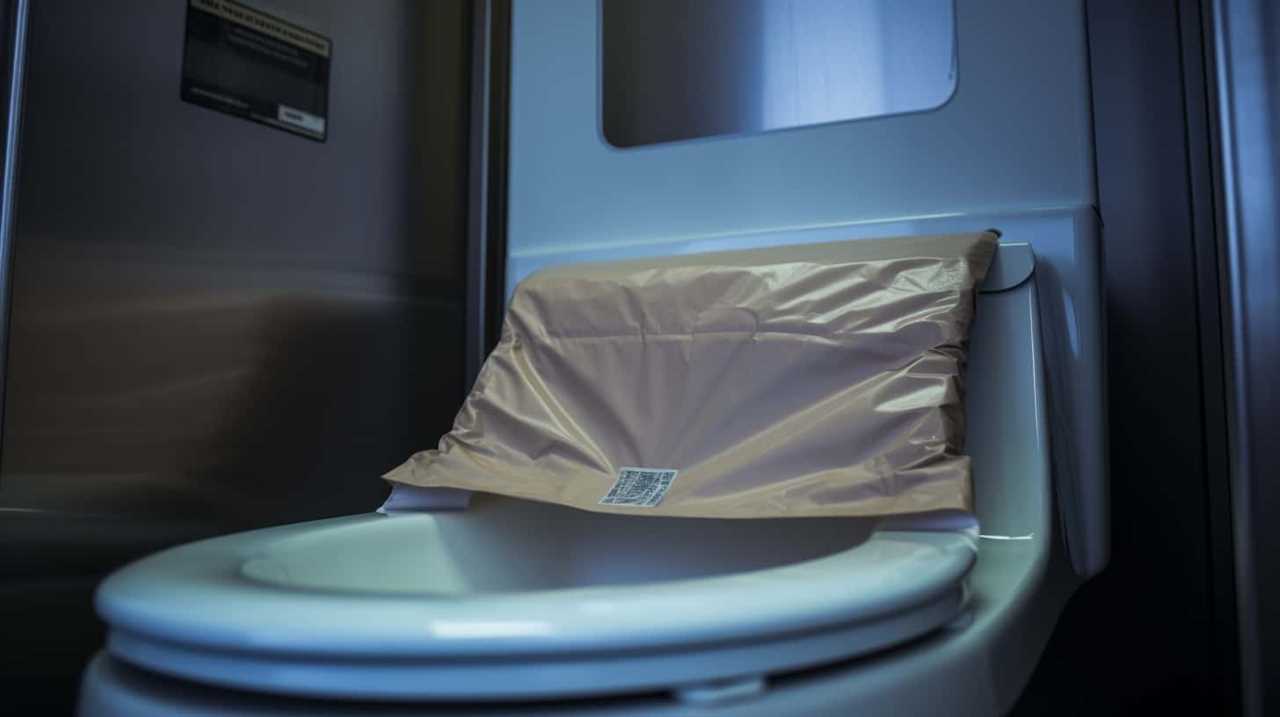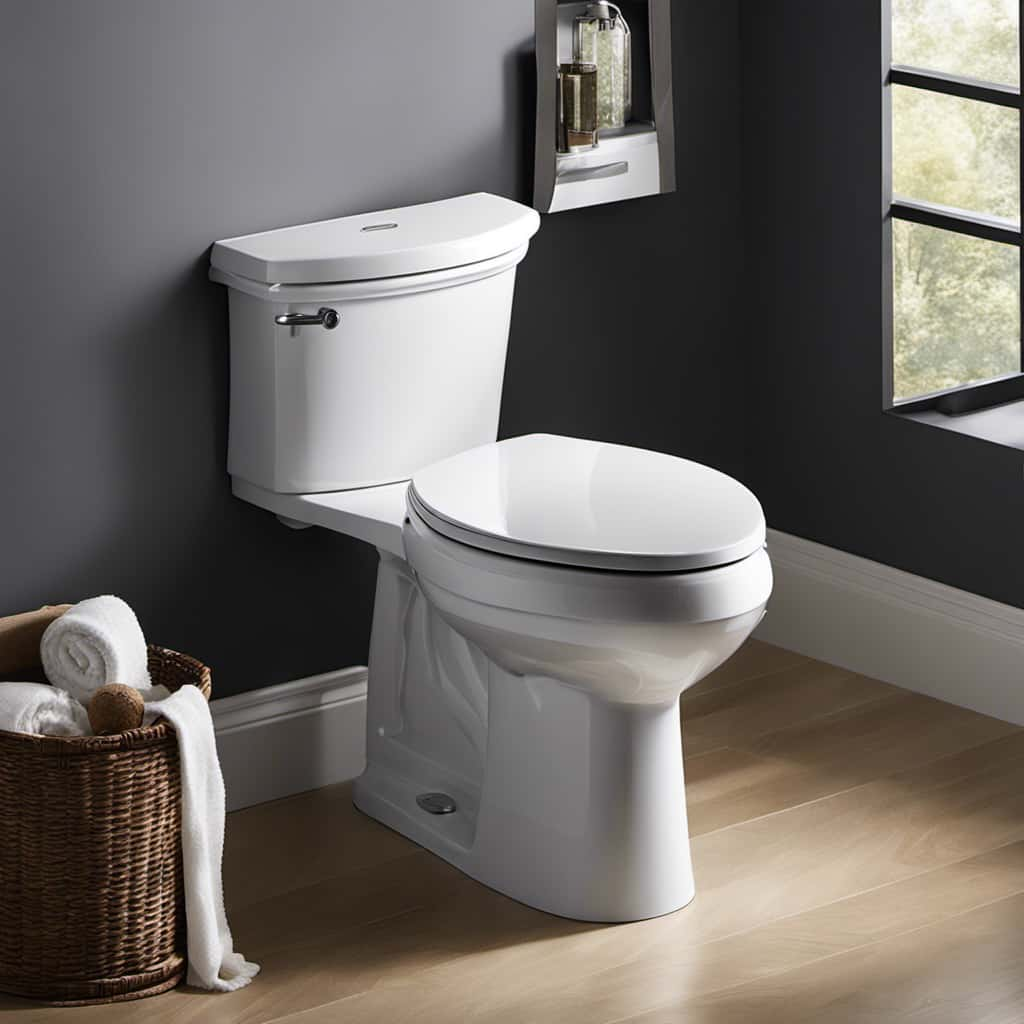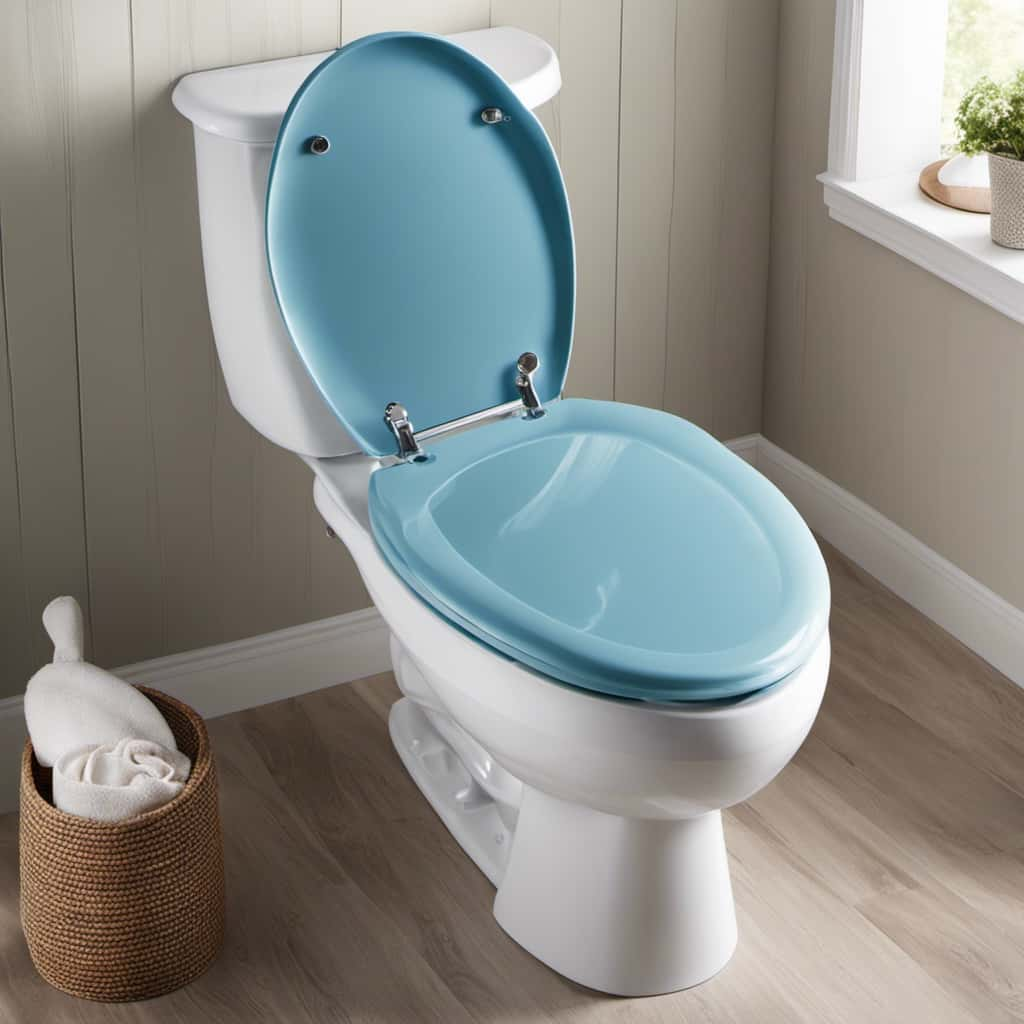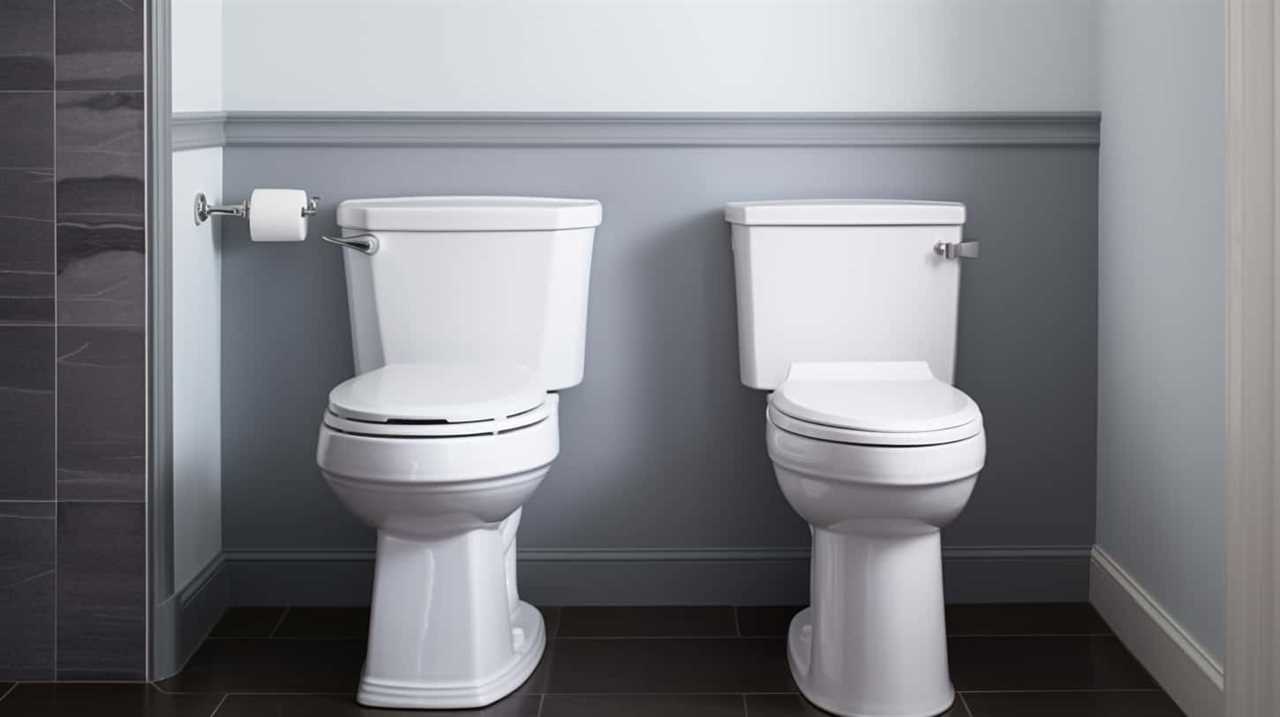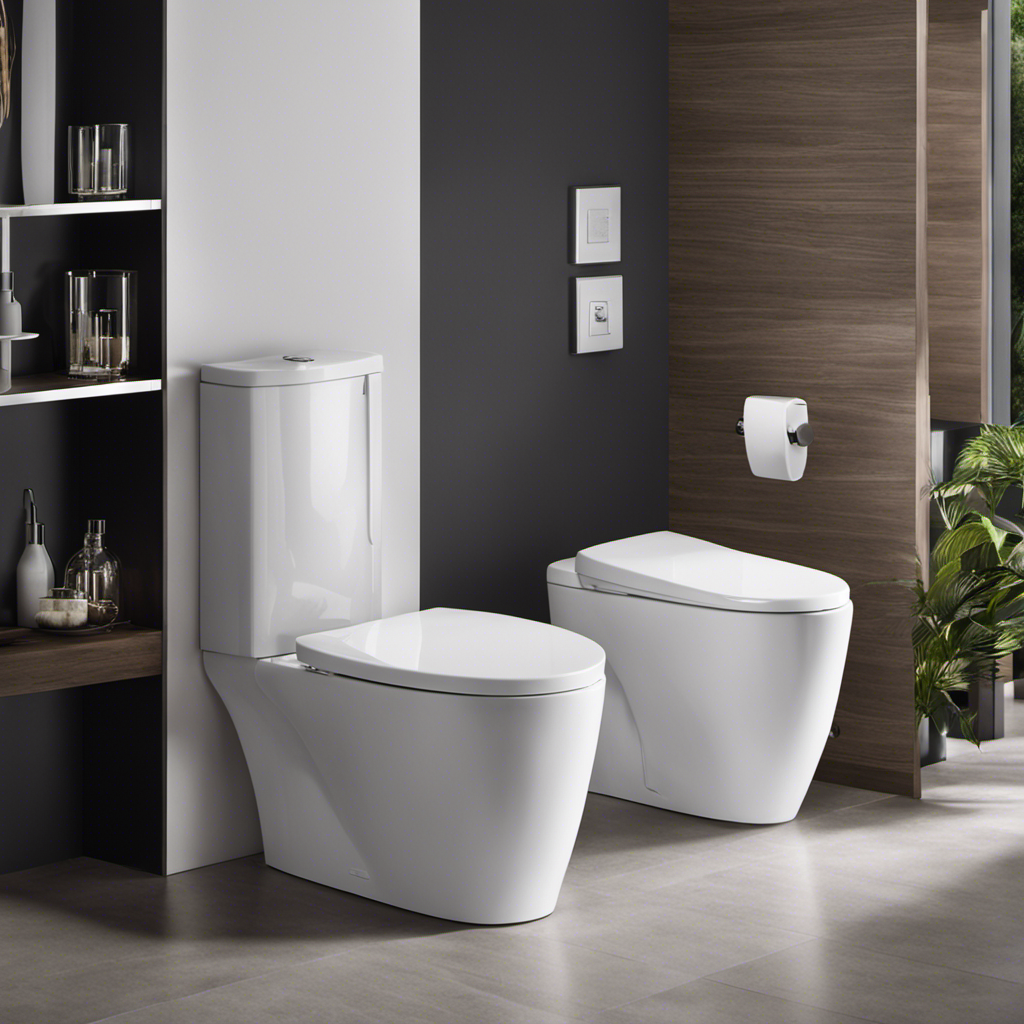Have you ever wondered what to do with that sponge after cleaning the toilet? We’ve got you covered.
In this article, we’ll share our expert tips and tricks on how to properly handle your trusty cleaning tool. From rinsing and disinfecting to finding the perfect storage spot, we’ll guide you every step of the way.
So, let’s dive in and discover the best practices for managing your post-toilet cleaning sponge.
Key Takeaways
- Rinse the sponge thoroughly with hot water after cleaning the toilet.
- Disinfect the sponge with bleach or a disinfectant spray.
- Store the sponge in a dry, well-ventilated area away from other cleaning tools and personal items.
- Dispose of the sponge responsibly by rinsing it before disposal and checking local recycling guidelines.
Properly Rinse and Disinfect
After cleaning the toilet, we should properly rinse and disinfect the sponge to ensure it’s clean and ready for future use. This step is crucial in preventing cross-contamination and maintaining a hygienic environment.

Start by wearing gloves to protect your hands from any harmful bacteria. Then, rinse the sponge thoroughly under warm water to remove any residue and debris.
Next, apply a disinfectant solution, such as a mixture of bleach and water, to the sponge. Allow the disinfectant to sit on the sponge for a few minutes to effectively kill any remaining germs.
Finally, rinse the sponge again under warm water to remove the disinfectant and let it air dry completely before storing it in a clean and dry area.
Following these steps will ensure that your sponge is properly cleaned, reducing the risk of spreading bacteria and maintaining a healthy living space.
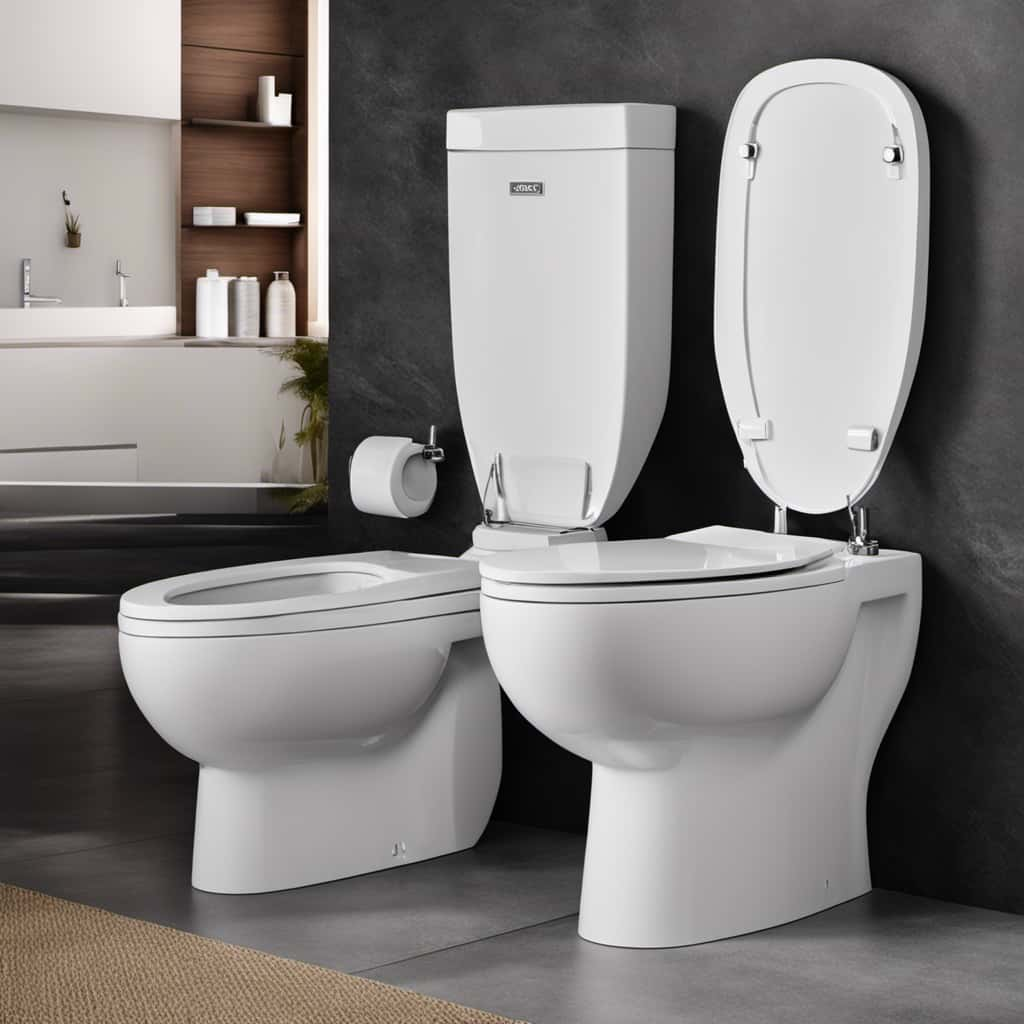
Store in a Sanitary Location
To ensure the cleanliness and hygiene of the sponge, we should store it in a sanitary location after properly rinsing and disinfecting it. Proper storage is essential in preventing contamination and maintaining the effectiveness of the sponge.
After using the sponge to clean the toilet, rinse it thoroughly with hot water to remove any remaining residue. Then, disinfect it using a solution of bleach and water or a disinfectant spray.
Once the sponge is clean and disinfected, it should be stored in a dry, well-ventilated area away from other cleaning tools and personal items. Avoid storing it in areas where it can come into contact with dirty surfaces or bacteria.
Consider Alternate Uses
Now that we’ve properly stored and maintained the cleanliness of our toilet cleaning sponge, let’s explore some alternate uses for it.
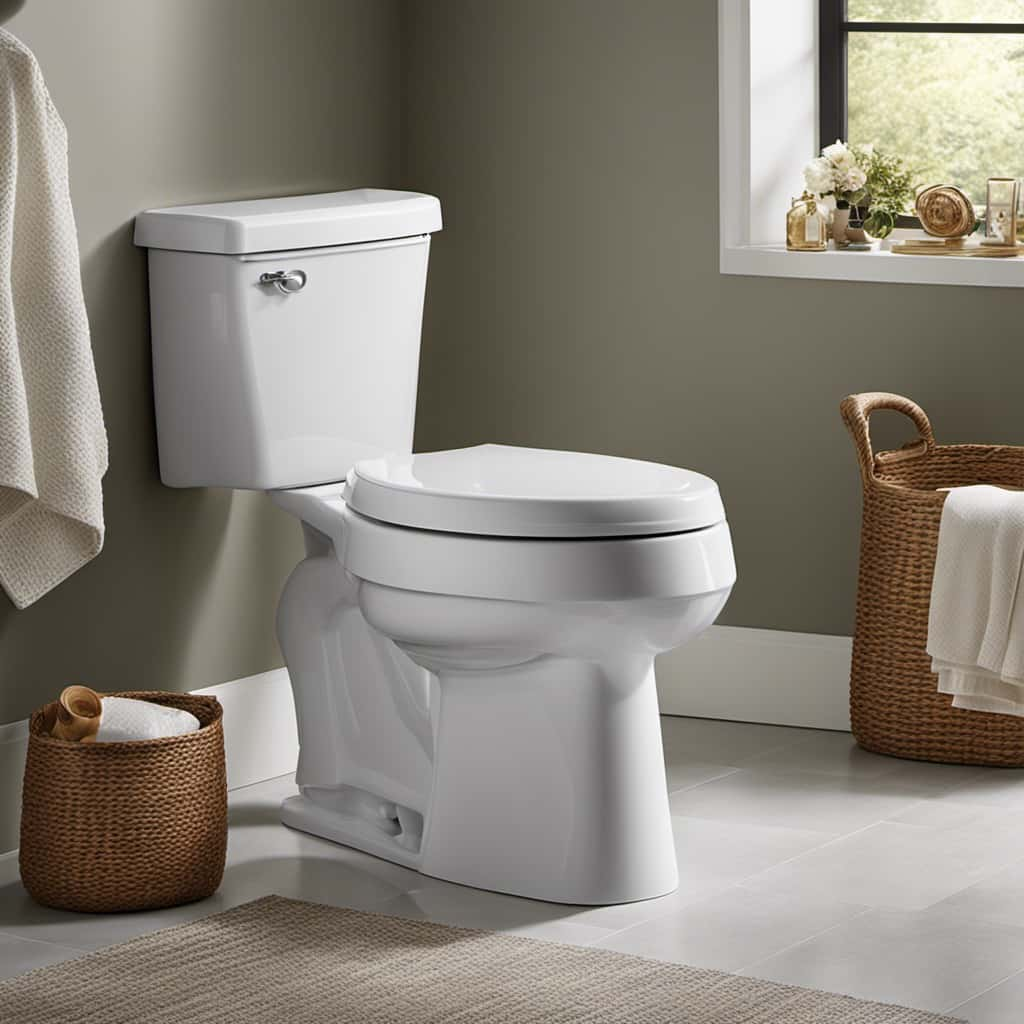
A toilet cleaning sponge can be repurposed for a variety of creative sponge crafts and DIY household cleaning hacks. For example, you can use the sponge to create unique stamped patterns on fabric or paper by dipping it in paint.
Additionally, the sponge can be cut into smaller pieces and used as a scrubber for hard-to-reach areas like grout or kitchen appliances. It can also be used to remove stubborn stains from surfaces or to apply cleaning solutions to windows and mirrors.
Replace When Necessary
As we continue our exploration of alternate uses for our toilet cleaning sponge, it’s important to be aware of when it’s necessary to replace the sponge. Understanding the toilet sponge lifespan and recognizing signs of a worn-out sponge is crucial for maintaining cleanliness and hygiene in our bathrooms.
Typically, a toilet sponge should be replaced every three to four months. Over time, the sponge deteriorates due to constant use and exposure to cleaning chemicals. When the sponge begins to show signs of wear, such as frayed edges, disintegration, or a foul odor that persists even after cleaning, it’s time for a replacement.
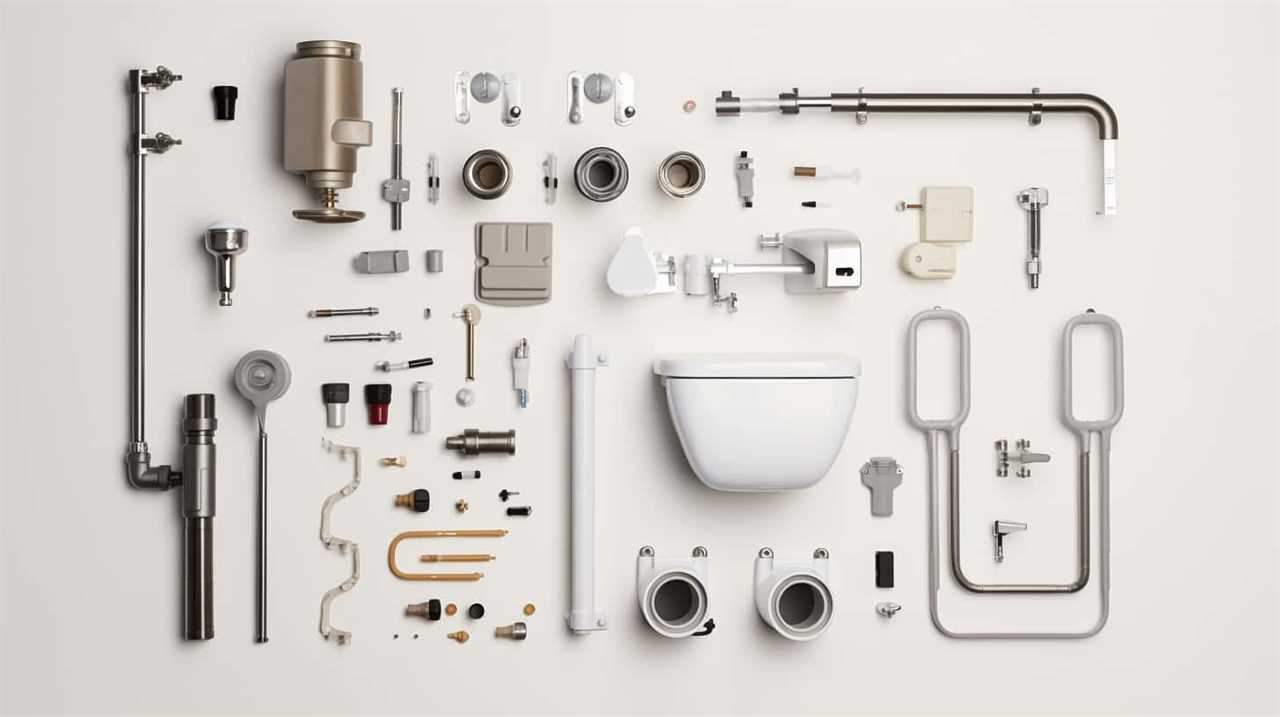
Using a worn-out sponge can be ineffective in removing stains and bacteria, compromising the cleanliness of our toilets. Therefore, it’s essential to regularly inspect the sponge and replace it when necessary to ensure optimal cleaning results and a hygienic bathroom environment.
Dispose of Responsibly
How can we responsibly dispose of our toilet cleaning sponge? Proper disposal of our toilet cleaning sponge is essential to minimize its environmental impact. Here are four simple steps to dispose of it responsibly:
- Rinse the sponge thoroughly: Before disposing of the sponge, rinse it well to remove any cleaning chemicals or residue.
- Check local recycling guidelines: Research if your sponge can be recycled. Some sponges are made of recyclable materials and can be placed in the appropriate recycling bin.
- Look for alternative uses: If the sponge is still in good condition, consider repurposing it for other cleaning tasks around the house.
- Dispose in the trash: If your sponge can’t be recycled or repurposed, wrap it in a plastic bag and place it in the regular trash bin.
Frequently Asked Questions
Can I Use the Same Sponge to Clean Different Areas of the Bathroom, or Should I Have Separate Sponges for Each Task?
We should consider using separate sponges for different bathroom tasks. While it may be tempting to use the same sponge, using separate ones ensures better hygiene and prevents cross-contamination between areas.
How Often Should I Replace My Toilet Cleaning Sponge?
We replace our toilet cleaning sponge every few months to maintain sanitation. After each use, we rinse it well, wring out excess water, and store it in a clean, dry place.
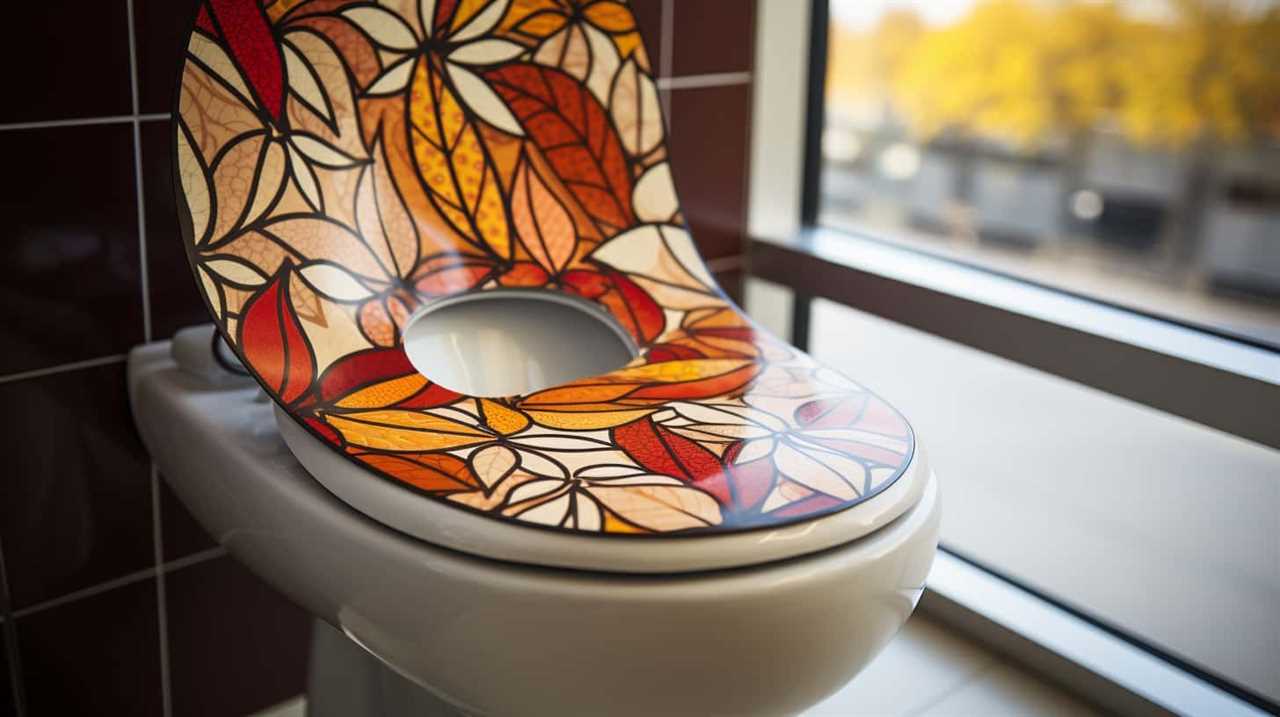
Are There Any Natural or Homemade Alternatives to Store-Bought Disinfectants for Cleaning the Toilet?
There’s nothing like finding natural alternatives for store-bought disinfectants. Homemade solutions for toilet cleaning can be effective and eco-friendly. Now, let’s dive into the world of natural cleaning with these DIY options.
What Are Some Other Common Household Items That Can Be Used as a Substitute for a Toilet Cleaning Sponge?
Some common household items can be used as a substitute for a toilet cleaning sponge. Using natural disinfectants has benefits such as being eco-friendly and avoiding harsh chemicals.
Is It Safe to Clean Other Areas of the House, Such as Kitchen Countertops or Bathroom Sinks, With the Same Sponge Used for Cleaning the Toilet?
Using toilet cleaning sponges for other areas of the house is not recommended. It can spread germs and cross-contaminate surfaces. Natural alternatives for toilet cleaning, such as vinegar or baking soda, have pros and cons too.
Conclusion
In conclusion, after cleaning the toilet, it’s important to properly rinse and disinfect the sponge and store it in a sanitary location.
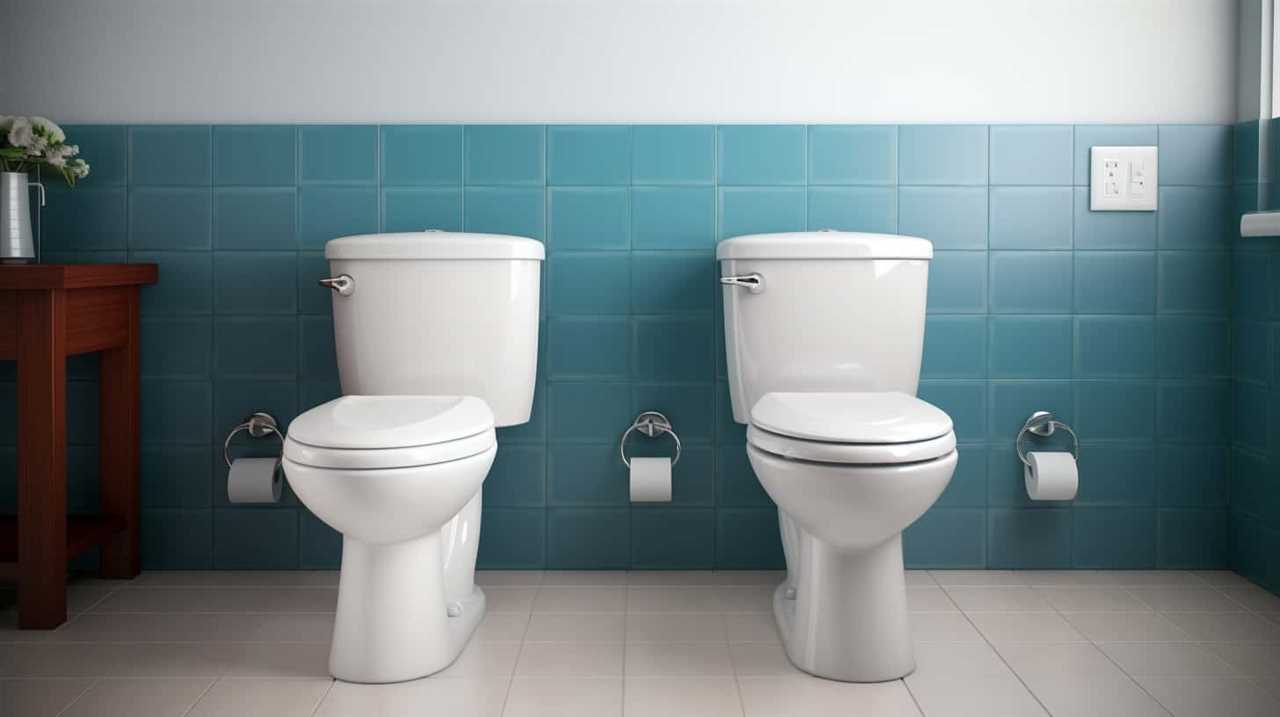
Interestingly, studies have shown that sponges can harbor millions of bacteria per square inch, making proper cleaning and storage crucial for maintaining hygiene.
Additionally, considering alternate uses for the sponge and replacing it when necessary are key steps to ensure cleanliness.
Lastly, disposing of the sponge responsibly is essential for environmental sustainability.
